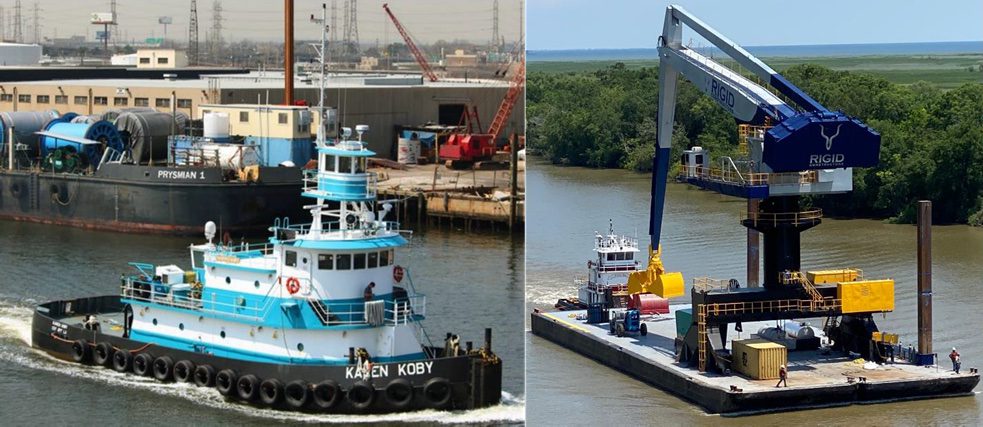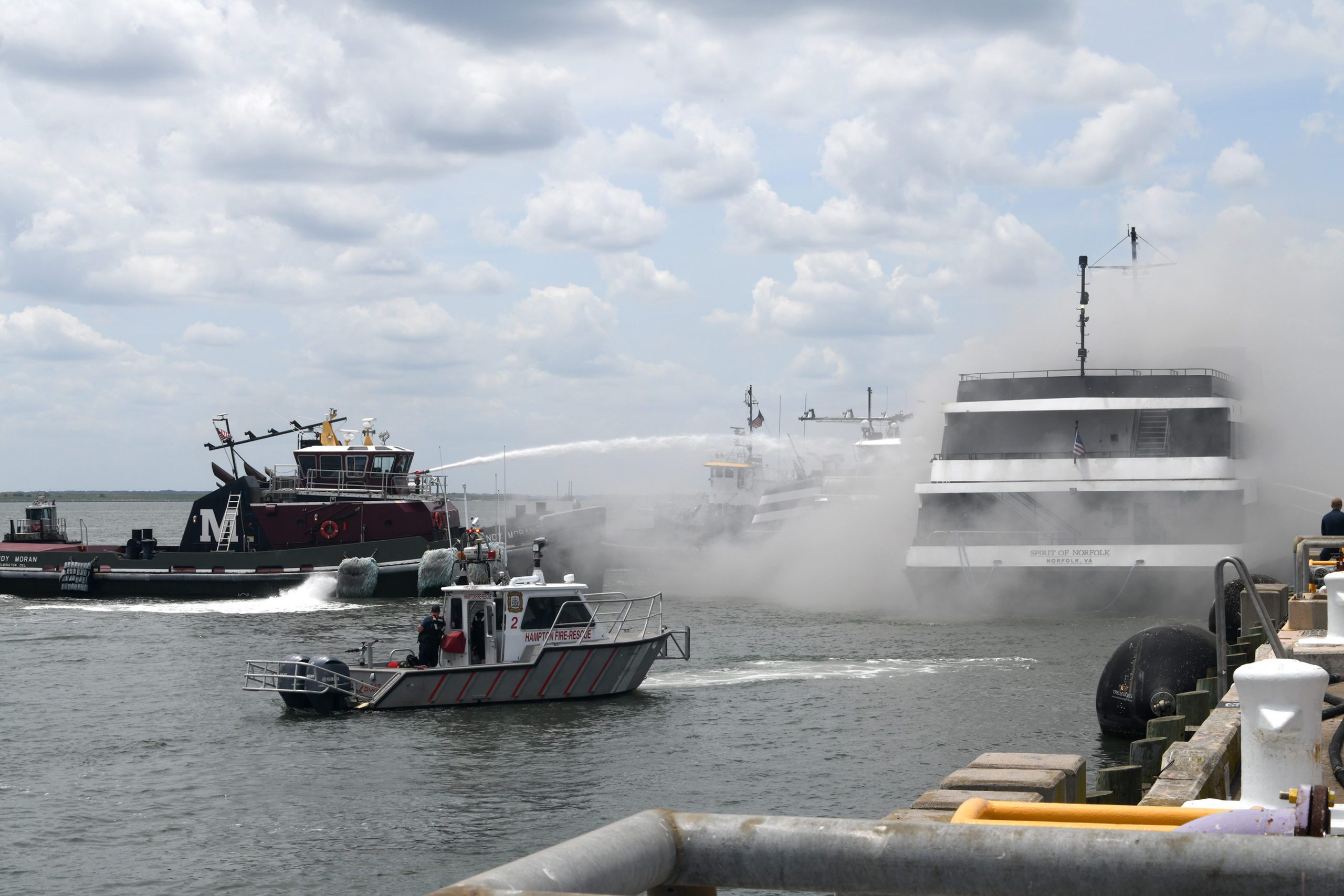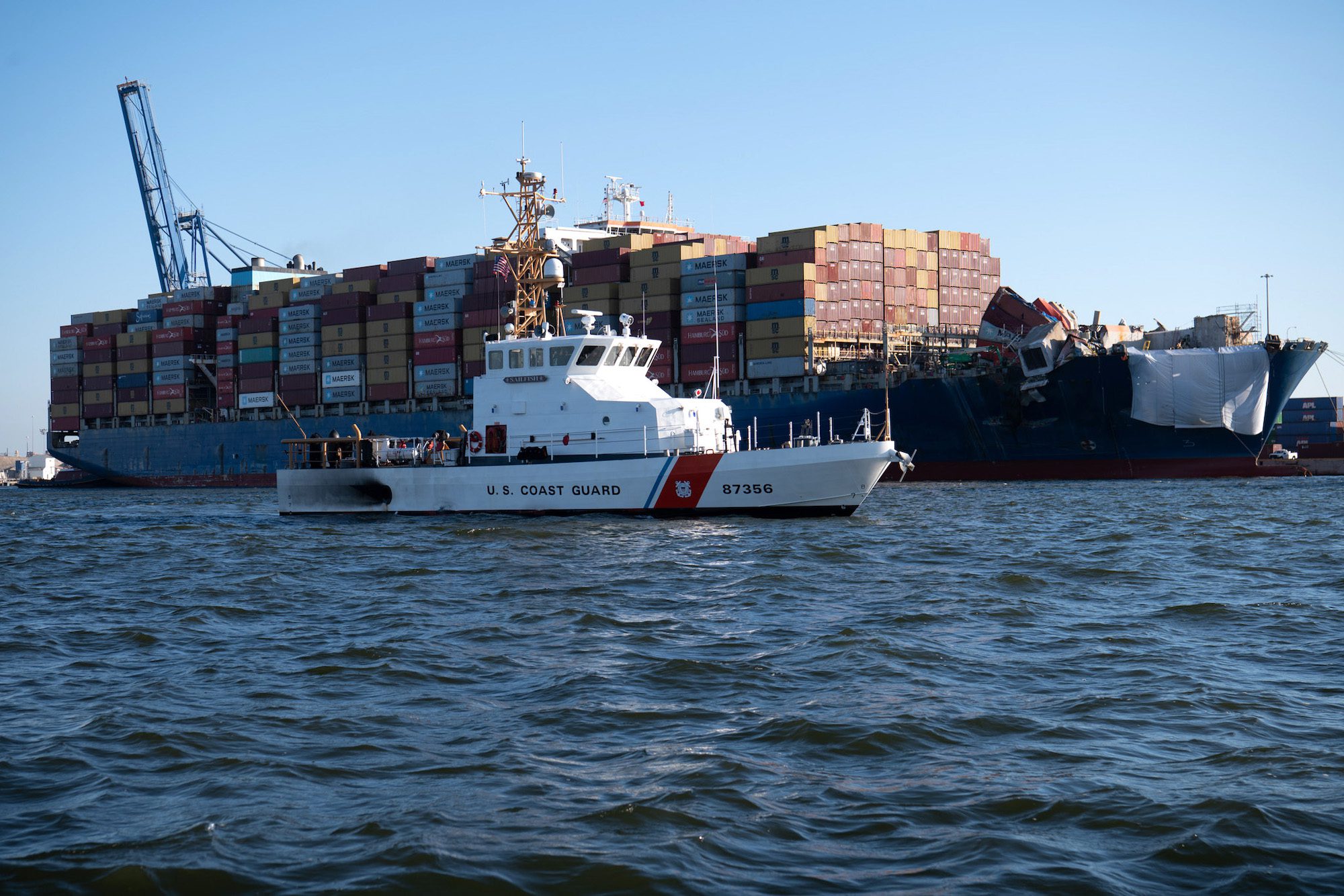The National Transportation Safety Board has determined that the capsizing and sinking of the crane barge Ambition in the Gulf of Mexico was caused by the barge owner’s lack of hull inspection and maintenance, resulting in the failure of the hull and subsequent flooding.
The crane barge, owned by Rigid Constructors, capsized and sank on June 15, 2022, releasing approximately 1,980 gallons of oil. No injuries were reported, but the Ambition and its crane were a total loss estimated at $6.3 million.
Due to the height of the crane, the Ambition was being towed offshore, but did not have the necessary load line certificate or exemption approved by the U.S. Coast Guard. Prior to departure, a deckhand inspected the barge and found that hatch cover gaskets were missing, some hatch cover lids were unlocked, and there was visible hull damage.
During a post-salvage examination, investigators found a 25-foot-long separation along the weld seam between the bilge knuckle and bottom plates, which led to initial flooding. The NTSB determined that the poor hull condition was caused by the owner’s failure to conduct permanent repairs in a critical area, and the separation progressed beyond a temporary repair.
The NTSB determined the probable cause of the capsizing and sinking of the Ambition was Rigid Constructors’ lack of hull inspection and maintenance, and not conducting permanent repairs, which resulted in the failure of the hull and subsequent flooding.
“To protect vessels and the environment, it is good marine practice for vessel owners to conduct regular oversight and maintenance of hulls, including between drydock periods,” the report said. “An effective maintenance and hull inspection program should proactively address potential steel wastage, identify hull and watertight integrity deficiencies, and ensure corrosion issues are repaired in a timely manner by permanent means.”
Marine Investigation Report 23-18 can be found on the NTSB website.
Unlock Exclusive Insights Today!
Join the gCaptain Club for curated content, insider opinions, and vibrant community discussions.

 Join The Club
Join The Club













